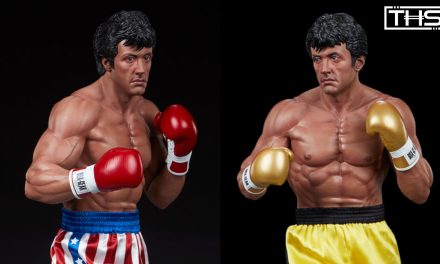The zombie genre resurrection peaked with the original 28 Days Later. It provided the same societal questions that the old Romero zombie movies but added in a virus that fundamentally changed the genre. Now we’re at the third film in this series, 28 Years Later. It brings back the creative team behind the original in Danny Boyle and Alex Garland. In the time between first infection and this movie, the British mainland has changed. It’s more like a prison for the people who live on the island, and the world patrols the waters, making sure no one slips out of the quarantine zone. If you haven’t seen 28 Days or 28 Weeks Later recently, you don’t really need a refresher besides the idea that the rage virus makes people go crazy and want to kill others.
This new film stars Aaron Taylor-Johnson, Jodie Comer, Ralph Fiennes, Alfie Williams, Christopher Fulford, and Jack O’Connell. The movie kicks off with the start of the rage virus outbreak in the Scottish Highlands, a group of kids watch The Teletubbies as infected break through their home, killing the adults, until one lone survivor remains, Jimmy. Then we get ’28 Years Later’ on screen and we follow the life of Spike (Alfie Williams) and his father Jamie (Aaron Taylor-Johnson). They live in a community that has lived through the epidemic and survived. They make trips outside the safety of their island to hunt and scavenge the mainland.
Spike is set to go out on his first hunt with his father, even though he’s younger than they normally would send a kid out. Spike’s mother Isla (Jodie Comer) is bedridden and her condition is undiagnosed because there haven’t been any doctors in the community for ages. After their hunt goes a bit awry, Spike notices a fire on the horizon and his father doesn’t tell him what it is. After learning that it’s a doctor, Spike decides to take his mother on a journey to see him and find out what’s wrong with her.
The Good Of 28 Years Later
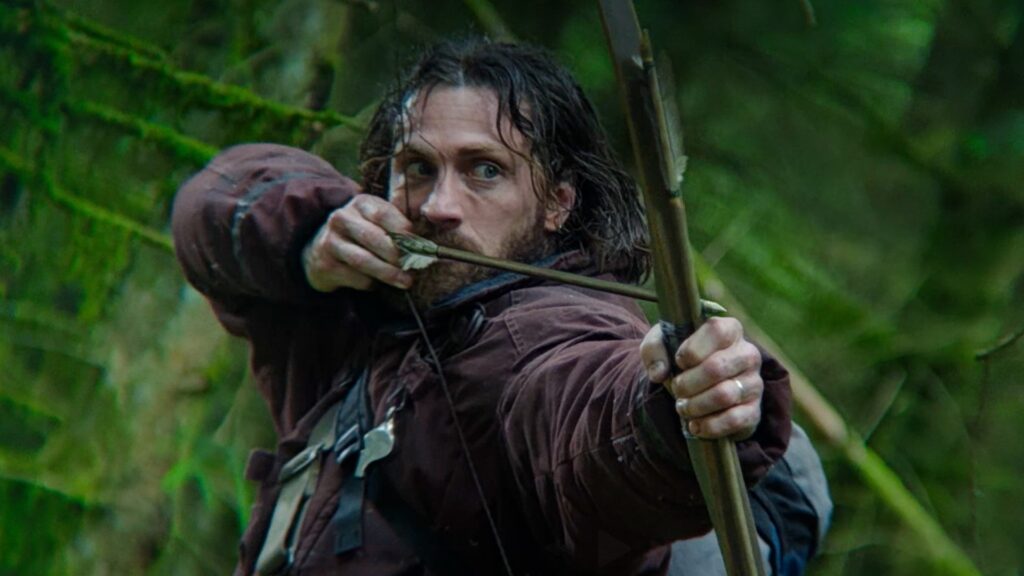
That’s the basic gist of the story for 28 Years Later, it doesn’t follow the buildup or the breakout of the virus any longer, which is refreshing. I was worried that this would be a retread of the previous two movies for a new generation, and it very much wasn’t that. This movie is quite subdued (at points) with its zombie action. Yes, there are thrilling scenes of chases, but there’s a lot of time where Boyle lets the audience breathe also. It’s a road movie, about the journey to see what is ailing Isla. Along the way, we meet several characters like Dr. Kelson (Ralph Fiennes) and Erick (Edvin Ryding) that add depth to the world.
Fiennes gives one of the better performances in the film as the enigmatic Dr. Kelson. The funniest and most layered performance in the film is Erick, a soldier whom Isla and Spike meet along their journey. He adds a modern aspect that shows that the outside world has moved on from the outbreak. Spike doesn’t know what a cell phone is, he doesn’t know what lip treatments are, but Erick brings that outside perspective. He’s also the smartest and most logically driven character in the film.
The movie is shot beautifully, if this was actially shot on an iPhone, then I want whatever model they were using. The long-abandoned vistas and landscapes of the UK are a perfect background for the ultra-violence of the rage virus. For the horror hounds out there, this is a tense and thrilling movie when it wants to be. Between the zombies and some of the thrilling sections, it’s highlighted by the alpha zombies being hulking monsters that tear people’s spines out.
The Bad Of 28 Years Later
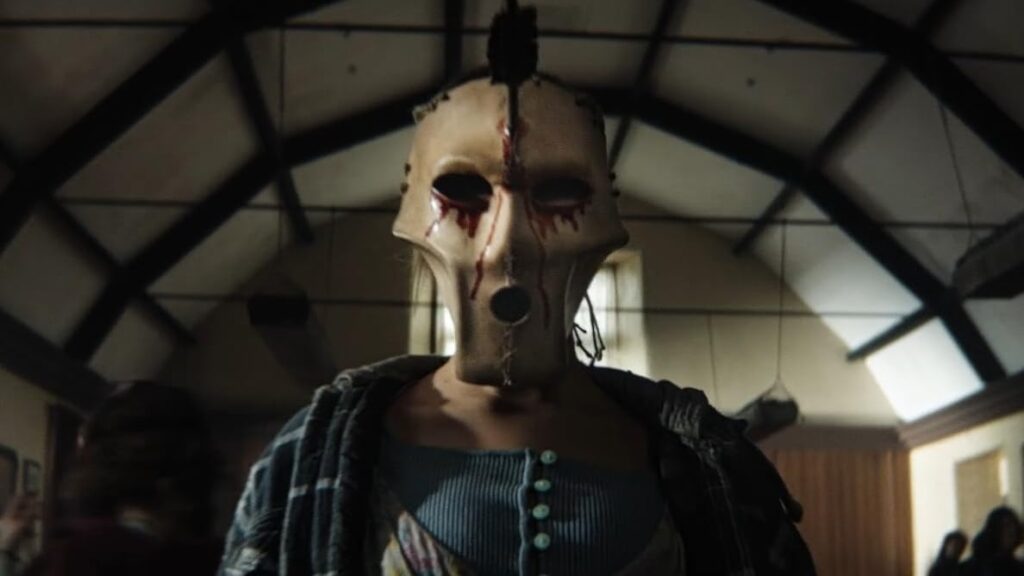
Effectively, this feels like at least three separate movies jammed into one. It’s your coming-of-age story for Spike in the beginning, it’s a terrifying road movie in the middle, and then you have an overly-sappy melodrama in the end, and even after that you have a separate story that gets a new life right at the finish. That many different sort of tonal and emotional shifts means that it’s a rough ride for the audience. Those stories also don’t all have the same quality or feel to them.
The editing at points, especially in the beginning of the film is also overly jarring. It was definitely shot on an iPhone, and at points it feels like it was edited on one as well. There are cuts that are supposed to show that Isla’s mental state changes on a dime, but they end up as just being out of the ordinary and don’t really get that message across.
This final point in this section is more of a personal gripe, but any time you start making a zombie movie and have the zombies talk or have a hierarchy and a society, you lose me. Zombie movies are supposed to show that humans are really the threat to humanity, and that the zombies are a means to an end, they’re like cattle that can kill you. Here, we get some of that with the alphas and it just takes me out of the film overall.
The Ugly Of 28 Years Later

I hate bringing up logical questions as a critic. It’s the lowest form of complaining about a movie. But every once in a while, a movie has characters that make such mind-numbingly bad decisions, that it makes you throw your hands up in the middle of a press screening and think “why are they so dumb?!”
There are multiple points here where either Spike or Isla make decisions that are so far past the point of normal movie characters needing to make the wrong decisions to keep a movie going. There are also just logical decisions that don’t make sense in the scheme of the world that the film builds. No one at the settlement sees someone coming from the gigantic pathway that they’re supposed to be watching? The alpha in the film gets knocked out twice but they still don’t deal with it?
Then there’s the film’s opening section that feels like an executive gave them a note that said, “be more like the first two films!”. It just sticks out and doesn’t fit in with the rest of THIS film’s tone.
There’s An Excellent Fifty Minutes Of Film Here Somewhere
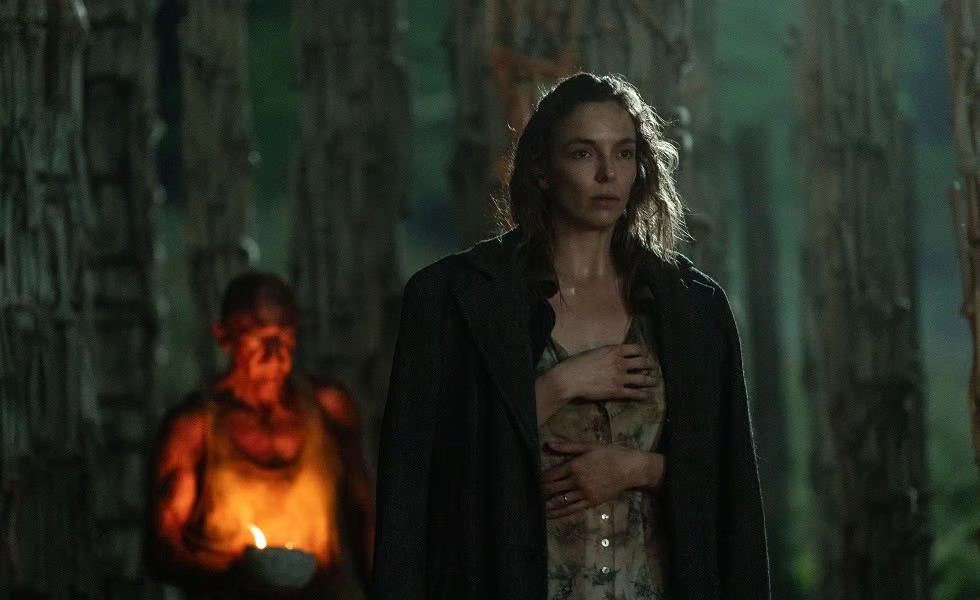
Even with some major issues, there are pieces of 28 Years Later that really work. The opening section between Spike and Jamie brings us back into this world as well as any movie out there. It’s easily the most tense and thrilling part of the film, and sets you up as an audience, but then the film never returns to that place of tension. Ralph Fiennes’ performance as Dr. Kelson is built up as the movie goes along, and the shift from supposed insane doctor to tender caregiver is refreshing. The film ends on a high note, setting us up for the inevitable second film 28 Years Later: The Bone Temple (time for some focus groups on that title). Hopefully that film can capture a solid tone and feel throughout the entirety.
28 Years Later wasn’t what I was expecting in some good ways and bad. It’s an uneven film that doesn’t necessarily know what it wants to be. Like a season of TV that changes wildly, there’s good and bad here. There’s still some worthy watching for zombie movie fans, but it’s a lot to get through.
28 Years Later releases in theaters on June 20th, 2025.
For more Reviews, make sure to check back to That Hashtag Show.

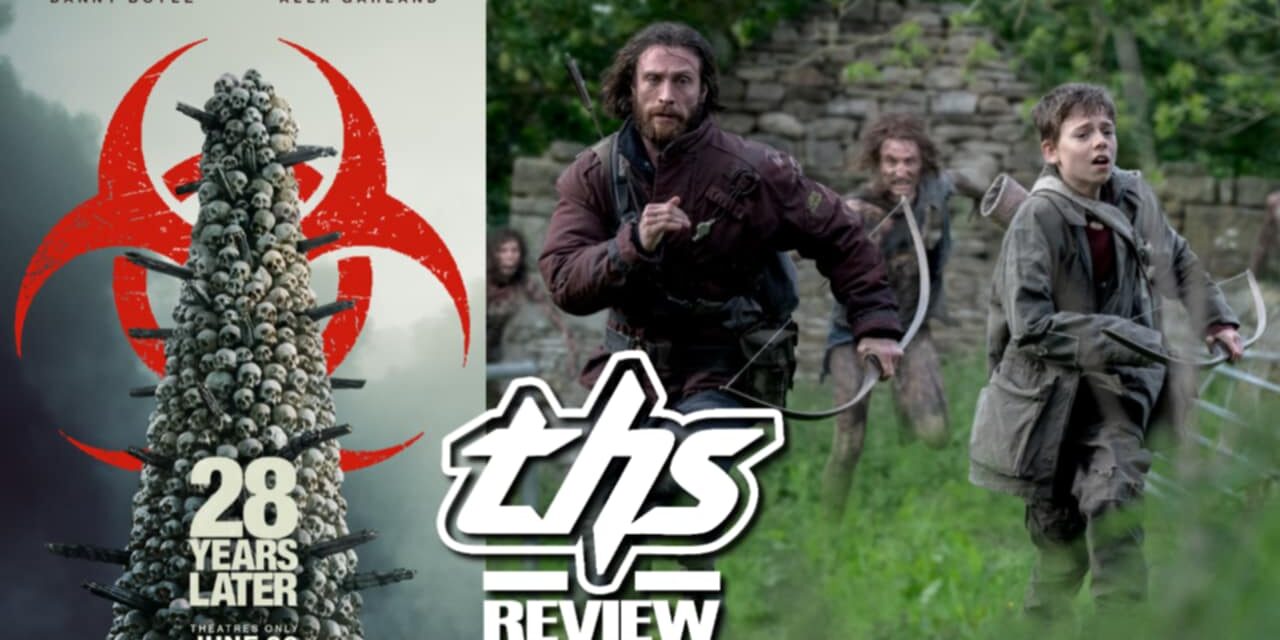


![Celebrating Tales From The Crypt Presents: Demon Knight [Fright-A-Thon]](http://18.211.146.234/wp-content/uploads/2021/10/Untitled-6-440x264.png)
